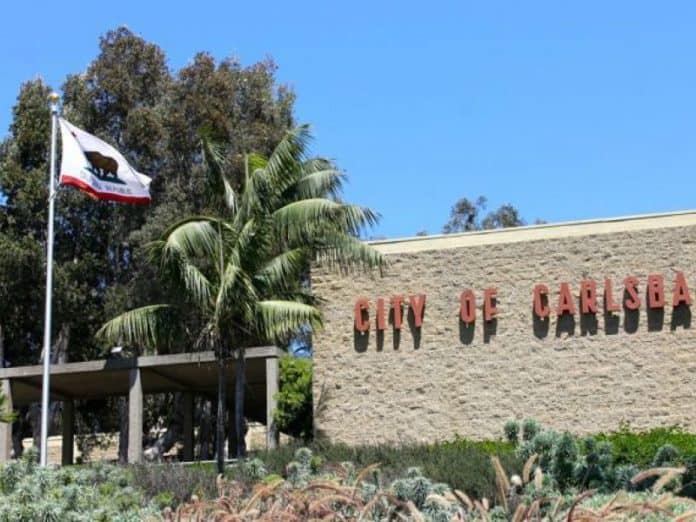City Council Discusses Goals
Easing traffic, managing growth and becoming a smart city were all topics discussed by the City Council at its annual goal setting workshop Tuesday, a key step in the city’s budget planning process. The City Council adopts a spending plan each year by July 1, the start of the new fiscal year.
Growth Management
The City Council asked staff to return within six months to discuss how the city could work with the community to develop a long-term strategy for managing growth. The city currently operates under a set of rules based on a growth management plan approved by voters in 1986. That plan, which has won national praise, makes sure that developers pay for infrastructure investments and public amenities needed to support an increase in population, and that those things keep pace with growth.
The growth management plan also established a cap on housing that reduced the total projected population in Carlsbad from 250,000 to about 130,000. The city is now wrapping up major new development, with building in those areas set aside for housing about 85 percent complete.
The shift from establishing solid infrastructure and an excellent quality of life to maintaining those things is a challenge faced by all cities when they reach a certain age. Carlsbad must also adjust to new state laws that require cities to make way for more housing, regardless of growth caps.
The City Council wants to get going on a new plan for how it can accommodate additional residents while maintaining city services, infrastructure and the overall quality of life according to the same high standards in place today. The first step will be hearing staff’s recommendations on how to best engage the community in the plan’s development, which would likely take shape over the next several years.
Smart Cities
The City Council also asked staff to consider how so called “smart cities” technologies could be woven into current operations and future planning. Smart cities initiatives use technology, data and communication to increase efficiency, improve service and enhance the community’s connection with their local government.
Carlsbad has already initiated a number of smart cities projects, including an automated traffic management system, a real time traffic map for city streets, an app to report graffiti, street light outages and other service needs and a new self-service portal for city records. The city has also secured access to more than 70 miles of high speed fiber that can be utilized for a wide variety of smart city applications. A team of city staff is putting together a long-term smart cities strategy to focus the investment of funds the city has already set aside for innovation.
Five Goals
While managing growth and increasing the use of technology were overarching themes during Tuesday’s meeting, the City Council focused on giving staff direction on five goals currently in place. City Council goals are typically broad, ambitious initiatives that go above and beyond day-to-day services and require concentrated resources and effort.
City Hall
A planning process for a new city hall kicked off recently to identify future city and community needs and how they could be accommodated on four city-owned properties: the current location of city hall; the current location of the city’s Faraday Administration Center; the parking lot of Pine Avenue Community Park; and the former Farmers Insurance building at the corner of El Camino Real and Faraday Avenue.
On Tuesday, the City Council further defined this goal to go beyond just planning and choosing a location. The Council wants to break ground on a new city hall within five years and identify the community’s needs and priorities for a future civic center located at the same site.
A new city hall would include city administrative offices and meeting rooms to replace and consolidate the more than two dozen city offices spread throughout Carlsbad today. A civic center would create a community focal point that brings people together to engage not just with their government but with each other. Civic centers typically include community services like parks, recreation centers, arts venues and libraries. Developers have already paid into a fund that would cover all the expenses of building a new city hall. Funding for a civic center would need to be identified based on what the community envisions for such a site.
Coastal Improvements
The City of Carlsbad has been working on a number of projects to improves access to the coastline and make visiting the beach a better experience. These projects, which include widening sidewalks and bike lanes: adding them where they don’t exist; creating comfortable places to gather; and easing traffic flow along the coast will be given a high priority in the city’s annual plan for construction projects.
The City Council asked staff to focus on getting an agreement in place with State Parks to provide the city with greater control over the level of services provided along its coastline. The state owns most of the beach in Carlsbad, yet the beach is one of the city’s defining attributes. Other coastal cities, such as Encinitas, have agreements with the state, and Carlsbad would like to create something similar or even more comprehensive.
Traffic
Acknowledging that traffic is a top concern of local residents, the City Council asked staff to provide regular updates on the progress of a citywide traffic signal system that uses technology to coordinate red and green lights, depending on traffic flow. The city has been testing and refining its use of new traffic signal technology for the past several years through pilot programs. All 180 traffic signals in the city are scheduled to get new controllers within the next two years that will enable better traffic flow throughout the city.
To address the long-term need to shift more people away from driving alone in their cars, the City Council wants to repurpose its Traffic Safety Commission to focus on mobility, a term that refers to the movement of people, not just cars. The newly focused commission would support the policies and programs in the city’s recently updated General Plan and Climate Action Plan. Both documents emphasize the need for more ride sharing, walking, biking, transit and other alternatives to the single-occupancy vehicle.
Village and Barrio Revitalization
The city is in the final stages of creating an updated Village and Barrio Master Plan, which will guide future changes to two of the city’s oldest neighborhoods, considered the historic heart of Carlsbad.
At the goal setting session, the City Council reaffirmed its commitment to ensuring the future vitality of these two neighborhoods. If the City Council is satisfied with the final draft plan to be presented for approval this spring, the next step would be to obtain Coastal Commission approval for those areas within the state agency’s jurisdiction.
The City Council asked staff to focus on getting the plan through all the needed approvals so it could be in full effect within two years. The plan could go into effect sooner in parts of the Village and Barrio outside the coastal zone.
The draft plan does not contemplate major changes to zoning or building heights and maintains current levels of allowed density. It includes design guidelines and land use rules intended to encourage private investment and sustainability while honoring and enhancing the neighborhoods’ character.
Lowering the Railroad Tracks
The City Council decided to stay the course with one of its more specific goals, lowering the railroad tracks through the northern part of the city. SANDAG, the region’s transportation planning agency, is in the process of installing a second parallel set of tracks along the entire rail line to accommodate an expected doubling of train traffic by 2035. City officials want to lower the train tracks where they go through the Barrio and Village areas, similar to what’s been done in Solana Beach.
A study completed last year showed that lowering the tracks is technically feasible, but expensive. The same study found that leaving the two sets of tracks at street level would be bad for local businesses, create significant interruptions in traffic, decrease safety and threaten the long-term goals for revitalizing the Village and Barrio. Ultimately, the cost of not lowering the tracks could be higher than the project cost, according to the study.
The next step is to complete an environmental analysis of the below-street-level option so it can be compared to the street-level option, which has already been analyzed. The city is working with SANDAG and NCTD, which owns the rail corridor through Carlsbad, to get this done and identify possible funding options.
What’s Next
City staff is expected to return to the City Council in April to finalize the 2018-19 goals and in May to review the work plans for each goal. May is also when the City Council will review the proposed Capital Improvement Plan budget for the coming fiscal year. The CIP budget covers major projects like road improvements, public facility upgrades and other infrastructure investments.
The operating budget, which covers day-to-day city services, will be considered in early June.
A video of Tuesday’s meeting is available on the city website and will play on the city’s cable channel (Charter Spectrum channel 24 and AT&T U-verse channel 99) throughout the next few months. Residents can sign up to get agendas and staff reports about upcoming budget meetings and other city business. The current budget schedule includes:
April 2018 Final goals adopted by the City Council (date TBD)
May 2018 Goal work plans adopted by the City Council (date TBD)
May 8, 2018 Capital Improvements Plan budget presented to City Council
May 22, 2018 Operating budget presented to City Council
May 29, 2018 Public budget workshop
June 12, 2018 Final adoption of the fiscal year 2018-19 budget.


















